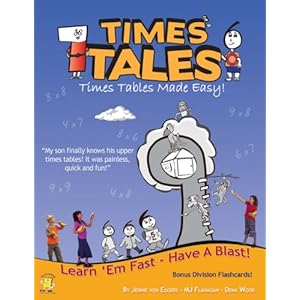Grammar Island is not your everyday grammar program. It is quite unusual and can be hard to get a
handle on what exactly it is. However, I
would encourage you to “figure it out” because it is quite worth the effort.
Grammar Island has a number of “cons” depending on your perspective. These “cons” could just as easily switch to one’s “pro” column if it suits your style of learning/teaching. Grammar Island is not a text book. It does not contain numerous exercises to drill and practice a new concept. It does not come with “lesson plans” nor recommended daily assignments. If these are requirements for you, then you had best run the other way towards a more traditional program.
So what is it? It is a storybook format which discusses grammar under four main subject areas. (Note: “discusses” is a deliberate word choice. Grammar Island does NOT drill.) It explains to the reader the Eight Parts of Speech (noun, pronoun, adjective, verb, adverb, conjunction, preposition and interjection). It does this in an easy to read manner. Next the book discusses the Parts of a Sentence covering: subject, predicate, direct object, indirect object and subject complement. The third section of the book discusses Phrases, but limits itself to only prepositional phrases. The final section discusses Clauses covering compound sentences, independent and dependent clauses. That’s it.
You are probably saying, “Excuse me, but I thought you said this program was worth the effort?” Or you might be saying something in a bit more colorful language which conveys dismay and bewilderment. Hang in there!
 So here is the crux of Thompson’s program: Four Level Analysis. The Practice Island books were designed especially for this. Write a sentence across the top of a page in landscape format. On the first line below the sentence, label the parts of speech for each word in the sentence. Second line yields the second level of analysis which is the parts of a sentence (subject, action or linking verb, direct object etc.). Third line is reserved for labeling prepositional phrases. Fourth line is where you would label clauses and the type of sentence (simple declarative sentence, compound interrogative sentence, etc.). This is when the child actually begins internalizing what they have read. Real learning! Time to get giddy! It is Thompson's own version of sentence diagramming that doesn't involve drawing all of those lines with a ruler which then slant off in every direction. A real “plus” in my opinion. But then again, I put sentence diagraming in the same fun-filled category as root canal.
So here is the crux of Thompson’s program: Four Level Analysis. The Practice Island books were designed especially for this. Write a sentence across the top of a page in landscape format. On the first line below the sentence, label the parts of speech for each word in the sentence. Second line yields the second level of analysis which is the parts of a sentence (subject, action or linking verb, direct object etc.). Third line is reserved for labeling prepositional phrases. Fourth line is where you would label clauses and the type of sentence (simple declarative sentence, compound interrogative sentence, etc.). This is when the child actually begins internalizing what they have read. Real learning! Time to get giddy! It is Thompson's own version of sentence diagramming that doesn't involve drawing all of those lines with a ruler which then slant off in every direction. A real “plus” in my opinion. But then again, I put sentence diagraming in the same fun-filled category as root canal.
So if you plan on just purchasing the Grammar Island text
and teacher’s manual for $30 and $35, respectively and skipping the Practice Island workbooks, you are about to make a gigantic mistake.
The Practice Island workbooks are essential to the efficacy of this program. They are also very inexpensive. Both the child’s copy and teacher’s copy are $10 each. There are 100 carefully constructed sentences to which the child to applies the Four Level Analysis. The teacher’s manual thankfully contains the answers. If you are not a grammar guru, then this is not only greatly appreciated, but essential. There are also explanations as to why certain words are a specific part of speech. For example, it might explain why “blue” is not an adjective in a given sentence because it is being modified by adjectives and is being used as a noun, referring to the name of a color. Numerous subjects not covered in Grammar Island will be reviewed in the Practice Island teacher’s guide, such as: the difference between coordinating conjunctions and subordinating conjunctions; the proper punctuation for joining two independent clauses with and without a conjunction; and the key to using subject pronouns and object pronouns.
Each child is different, so when they “catch on” will vary. When my child was working on Sentences 1-25, I was wondering if this program was a wise decision or not. It felt like I was walking him through each step, word by word. Around the mid-point of Practice Island, I could see the progress he was making. By the time we got to Sentence 75, I knew we would be purchasing the Grammar Town and Practice Town program for next year. I was now a believer and could see just how effective it was.
For those of you who cannot afford to purchase all four books, fear not. Obviously having a complete set of both student and teacher texts is preferred, however you can purchase the teacher’s manual of Grammar Island and skip the student’s copy. It is easy enough to cover any “answers” that you don’t want the child to see before they have contemplated things with either your hand or a piece of paper. If the $10 for the student’s Practice Island workbook won’t fit into your budget, you can always write the sentences onto paper or a white board for your child to then conduct his analysis. However, it is WAY easier if the child has his own workbook. As you make notes about the nuances of certain completed sentences, you may find yourself flipping back to discuss the similarities or differences among certain sentences. It clearly would be helpful for the child to be able to review his work for this type of scenario.
Overall, I would highly recommend this program. It is certainly unusual in format, but for
our family that was a huge perk. It did
not elicit the kind of dread a more traditional program would have done. My son just walked by the computer and saw me typing this. His comment about the Grammar Island/Practice Island program was, "It is 100% great." I don't believe their could be a higher compliment coming from a 9 year old boy who normally is allergic to all things involving a pencil.









